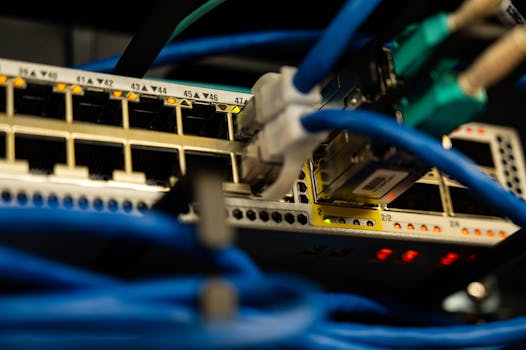Starlink: Revolutionizing Global Internet Connectivity with Satellite Technology
Starlink is a satellite constellation developed by SpaceX, aiming to provide high-speed, low-latency internet connectivity worldwide. With its cutting-edge technology, Starlink is revolutionizing the way we access the internet, bridging the digital divide, and transforming the global telecommunications landscape.

Starlink: Revolutionizing Global Internet Connectivity with Satellite Technology
Starlink is a satellite constellation developed by SpaceX, a private aerospace manufacturer and space transport services company founded by Elon Musk. The project aims to provide high-speed, low-latency internet connectivity worldwide, particularly in areas where traditional fiber-optic cables are not feasible or available. With its cutting-edge technology, Starlink is revolutionizing the way we access the internet, bridging the digital divide, and transforming the global telecommunications landscape.
At the beginning of the Starlink project, SpaceX launched its first batch of 60 satellites into low Earth orbit in May 2019. Since then, the company has launched numerous batches of satellites, with over 2,000 currently in orbit. The constellation is designed to comprise nearly 12,000 satellites, providing global coverage and enabling internet access to remote and underserved communities.
How Starlink Works
Starlink uses a network of low-Earth orbit satellites to provide internet connectivity. The satellites are equipped with advanced phased array technology, allowing them to communicate with each other and with ground stations. When a user sends data through the Starlink network, the signal is transmitted to the nearest satellite, which then relays the signal to other satellites and finally to a ground station. From there, the data is routed to its final destination on the internet.
The Starlink system uses the Ku and Ka frequency bands to provide high-speed internet connectivity. The satellites are designed to operate at an altitude of around 550 kilometers, which is much lower than traditional geostationary satellites. This lower altitude enables Starlink to provide faster data transfer rates and lower latency, making it suitable for real-time applications such as video conferencing and online gaming.
Benefits and Applications of Starlink
Starlink has numerous benefits and applications, including providing internet access to remote and underserved communities, bridging the digital divide, and enabling global connectivity. The system can also be used for emergency response and disaster relief, providing critical communication services in areas affected by natural disasters or conflicts.
In addition, Starlink has the potential to transform the global telecommunications landscape by providing a new era of satellite-based internet connectivity. The system can be used for a wide range of applications, including broadband internet access, mobile backhaul, and IoT connectivity. With its high-speed and low-latency capabilities, Starlink is poised to enable new use cases such as remote healthcare, online education, and virtual reality.
Challenges and Controversies Surrounding Starlink
While Starlink has the potential to revolutionize global internet connectivity, it also faces several challenges and controversies. One of the main concerns is the impact of the satellite constellation on the night sky, with many astronomers and scientists expressing concerns about the potential for the satellites to interfere with astronomical observations.
Another challenge facing Starlink is the issue of space debris. With thousands of satellites in orbit, there is a risk of collisions and the creation of new debris, which can pose a threat to other satellites and spacecraft. SpaceX has implemented measures to mitigate this risk, including designing the satellites to deorbit and burn up in the atmosphere at the end of their lifespan.
Furthermore, there are also regulatory challenges surrounding Starlink, with many countries and organizations expressing concerns about the potential for the system to interfere with traditional telecommunications infrastructure. SpaceX is working with regulatory bodies to address these concerns and ensure that Starlink complies with international regulations and standards.
